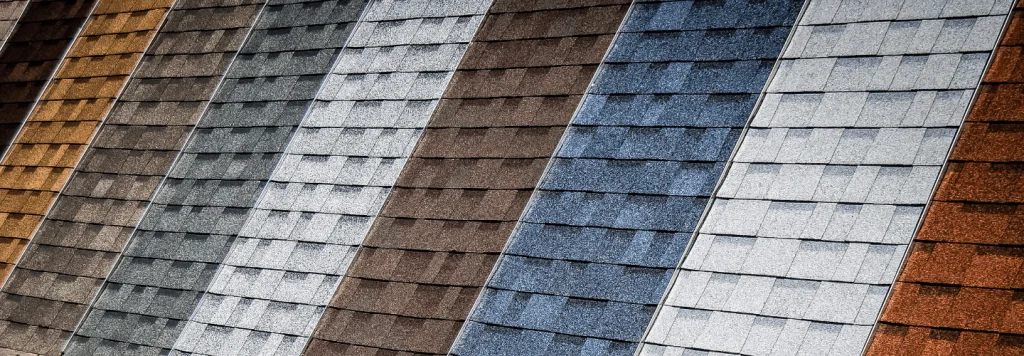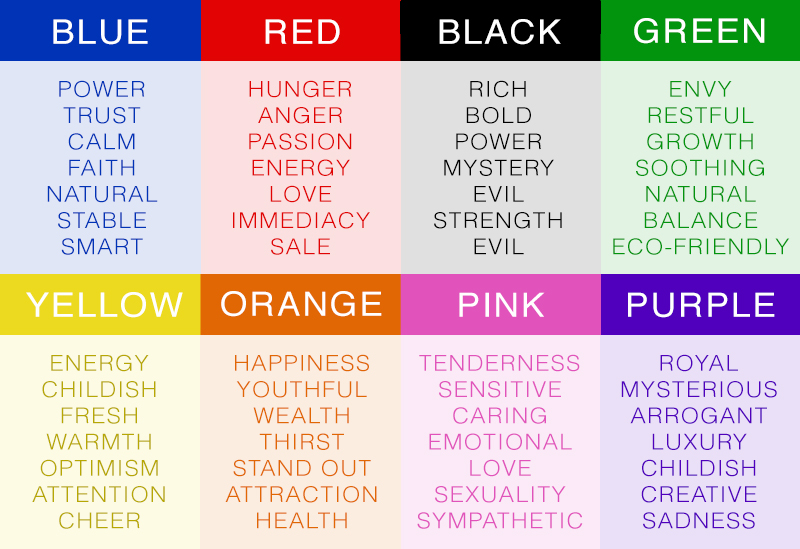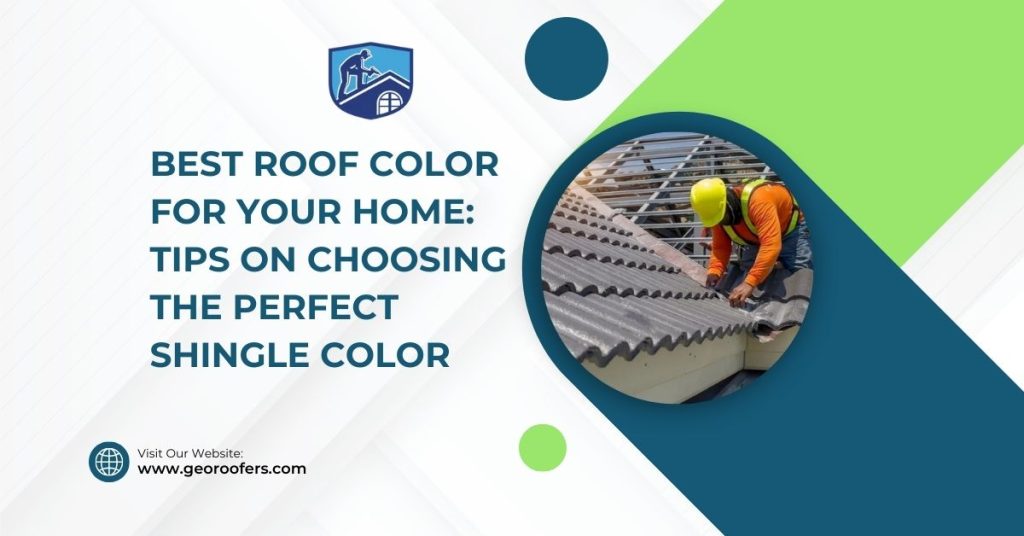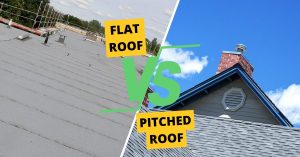Introduction
Selecting the Ideal Roof Color for Your Home
Your home’s roof is more than just a protective layer; it’s a crucial design element that can significantly impact your home’s overall aesthetic. Choosing the right roof color and shingle combination can enhance the curb appeal, complement your home’s style, and even affect energy efficiency. In this comprehensive guide, we’ll delve into the world of roofing, exploring the best roof color options, shingle choices, and how to make the perfect selection that not only protects your home but also elevates its visual appeal. Whether you’re installing a new roof or considering a change, this article is your go-to resource for making an informed decision that will leave your home looking its best.
Exploring the Basics of Roofing
Your roof is more than a protective covering; it’s a design element that contributes to your home’s overall aesthetic. The color of your roof plays a pivotal role in this, influencing the first impression your home makes. A well-chosen roof color can enhance curb appeal, while the wrong choice may detract from the beauty of your home.
When selecting a roof color, consider how it interacts with the rest of your home. The color should complement your siding, doors, and windows, creating a harmonious look. Additionally, take into account the architectural style of your home. Certain roof colors may be better suited to specific styles, whether it’s a traditional, modern, or eclectic design.
Exploring Popular Roof Colors and Styles

In 2024, various roof colors are trending, each contributing to a unique visual impact. Gray roofs continue to be popular, offering a versatile and modern aesthetic. Browns and earthy tones are making a comeback, especially for homes with a classic or rustic style. Sleek black roofs are also gaining popularity for their bold and contemporary appeal.
Consider the overall look you want to achieve when selecting a roof color. For traditional homes, earthy tones or classic blacks may be ideal, while modern homes might benefit from the clean lines of a gray or black roof. Additionally, the material of your roof plays a role in the final appearance, with options ranging from traditional asphalt shingles to more modern metal roofing.
Choosing the Best Shingle Color for Your Roof
Shingles are a crucial component of your roof, and their color can significantly impact your home’s appearance. Shingle color options vary, allowing homeowners to personalize their roofs according to their preferences. The right shingle color can enhance the overall look of your home, tying together different design elements.
Consider the architectural style of your home when selecting shingle colors. For a classic look, traditional colors like brown or charcoal may be suitable, while modern homes can benefit from bold choices such as deep blues or greens. Experimenting with color blends can also add visual interest to your roof, creating a unique and dynamic appearance.
The Science Behind Color Selection

Color theory plays a crucial role in making informed decisions about roof and shingle colors. Understanding the basics of color harmony, contrast, and blending can help you create a visually appealing exterior for your home. For example, complementary colors, like a dark roof with light siding, can create a striking contrast, while analogous colors, such as different shades of brown, can offer a more harmonious and soothing look.
When selecting exterior colors, consider the overall color palette of your neighborhood. While you want your home to stand out, it should also blend seamlessly with the surrounding environment. Online tools and home visualizers can be valuable resources in experimenting with different color combinations and finding the perfect balance for your home.
Factors to Consider in Roof Color Selection
Climate plays a significant role in roof color selection, especially when it comes to energy efficiency. Lighter roof colors reflect sunlight and heat, keeping your home cooler in warmer climates. In contrast, darker roof colors absorb heat, making them suitable for colder regions. Consider the local climate and the orientation of your home when choosing a roof color to optimize energy efficiency.
Coordinate your roof color with other exterior elements, such as the color of your siding, doors, and windows. Achieving a cohesive look enhances the overall visual appeal of your home. Additionally, be mindful of the architectural style, as certain colors may be more fitting for specific designs. A Mediterranean-style home, for instance, may benefit from warm, earthy tones, while a modern home could embrace sleeker, cooler colors.
Matching Roof Colors with the Rest of Your Home
| House Color | Shingle Color Suggestions |
| Beige/Cream/Tan | Black, Blue, Brown, Copper, Gray, Green |
| Blue | Black, Gray |
| Brown | Blue, Brown, Gray, Green |
| Gray | Black, Blue, Gray, Green, White |
| Green/Earth Tones | Black, Brown, Tan |
| Red | Black, Dark Brown, Gray, Green |
| Stone | Black, Brown, Tan |
| White | Most Colors |
| Wood | Black, Brown, Gray, Green |
| Yellow | Black, Dark Brown, Gray |
Selecting a roof color that complements the rest of your home is essential for achieving a cohesive and well-balanced look. Consider the color of your siding and choose a roof color that enhances rather than competes with it. For homes with a variety of exterior elements, such as stone accents or colorful doors, opt for a neutral roof color that ties everything together.
Your roof color should also work harmoniously with the colors of doors and windows. A well-coordinated palette creates visual unity and enhances the overall curb appeal of your home. When in doubt, consult color experts or use online tools to visualize different color combinations before making a final decision.
Dark vs. Light Roof Colors: Pros and Cons
The choice between dark and light roof colors depends on various factors, including climate, architectural style, and personal preference. Dark roof colors, such as deep grays or blacks, can create a bold and dramatic look, especially on modern or contemporary homes. They also absorb more heat, making them suitable for colder climates.
On the other hand, light roof colors, like whites or light grays, reflect sunlight, helping to keep your home cooler in warmer climates. Light-colored roofs are often preferred for homes in sunny regions, as they contribute to energy efficiency by reducing cooling costs. Consider the predominant weather conditions in your area when deciding between dark and light roof colors.
Practical Tips for Choosing the Right Roof Color
Utilizing online tools, such as home visualizers provided by roofing manufacturers, can be immensely helpful in the color selection process. These tools allow you to upload a photo of your home and experiment with different roof colors, helping you visualize the final result. Take advantage of such resources to make an informed decision and ensure the selected color complements the overall aesthetic of your home.
When considering slight color variations in your roof, keep in mind that these nuances can add depth and interest to your home’s exterior. While the overall color should coordinate with other elements, subtle variations can prevent the look from becoming too monotonous. Work with your roofing contractor to understand the available color options and how they might contribute to the final appearance of your home.
Working with Roofing Contractors: Communicating Your Preferences
Effective communication with your roofing contractor is key to achieving the desired roof color for your home. Clearly express your preferences, sharing any specific ideas or color preferences you have in mind. Provide visual references, such as photos or color swatches, to ensure a shared understanding of the desired outcome.
Ask your roofing professional about the available color options and inquire about any recommendations based on their experience. Roofing contractors often have valuable insights into which colors work best for different architectural styles and local climates. Collaborate with your contractor to make an informed decision that aligns with your vision and meets practical considerations.
Long-Term Considerations: Roof Replacement and Color Durability
While selecting a roof color is an exciting part of enhancing your home’s exterior, it’s crucial to consider the long-term implications, especially regarding roof replacement. Roofs typically have a lifespan of 20 to 30 years, and the color you choose should be durable and resistant to fading over time.
Regular maintenance, such as cleaning and inspecting your roof, can help prolong its lifespan and preserve its color. Keep in mind that darker colors may show signs of wear and fading more quickly than lighter colors. When planning for a roof replacement, factor in the durability and longevity of the chosen color to ensure your home continues to look its best for years to come.
Read More: Top 10 Signs You Need a New Roof or Roof Replacement
Conclusion: Making the Right Choice for Your Home
In conclusion, selecting the perfect roof color for your home involves a thoughtful and informed decision-making process. Consider the architectural style, climate, and overall aesthetic you want to achieve. Experiment with color combinations using online tools and consult with your roofing contractor for expert advice.
Remember, the right roof color not only enhances the curb appeal of your home but also contributes to energy efficiency and long-term durability. Whether you opt for a classic brown, a modern gray, or a bold black, make sure your choice reflects your style and complements the unique features of your home.
Key Takeaways
- Consider the architectural style and climate when choosing a roof color.
- Experiment with online tools to visualize different color combinations.
- Coordinate your roof color with other exterior elements for a cohesive look.
- Communicate effectively with your roofing contractor to ensure your preferences are understood.
- Factor in long-term considerations, such as roof replacement and color durability.
Making the right choice for your roof color is an investment in the overall beauty and longevity of your home. With careful consideration and attention to detail, you can achieve a stunning exterior that reflects your personal style and enhances the curb appeal of your property.






